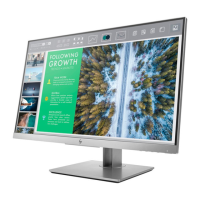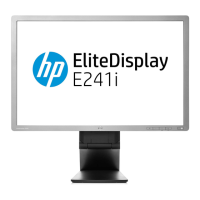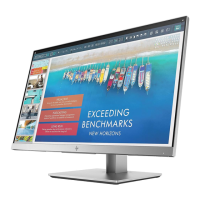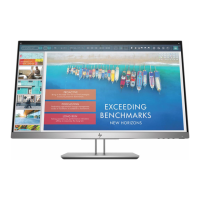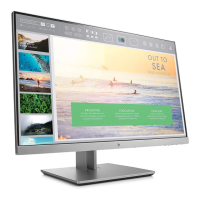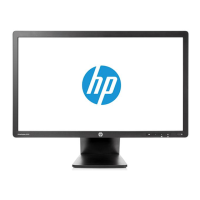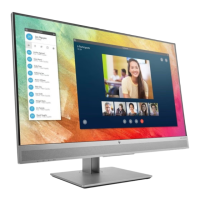3 Support and troubleshooting
Solving common issues
The following table lists possible issues, the possible cause of each issue, and the recommended solutions.
Table 3-1 Common issues and solutions
Issue Possible cause Solution
Screen is blank or video is
ashing.
Power cord is disconnected. Connect the monitor power cord.
Monitor is o. Press the monitor power button.
Video cable is improperly connected. Connect the video cable properly. For more information, see
Connecting the cables on page 9.
System is in Auto-Sleep Mode. Press any key on the keyboard or move the mouse to
inactivate the screen blanking utility.
Video card is incompatible. Open the OSD menu and select the Input menu. Set Auto-
Switch Input to O and manually select the input.
or
Replace the video card or connect the video cable to one of
the computer’s onboard video sources.
Image appears too dark. Brightness setting is too low. Open the OSD menu and select Brightness to adjust the
brightness scale as needed.
“Input Signal Not Found” is
displayed on the screen.
Monitor video cable is disconnected. Connect the appropriate video signal cable between the
computer and monitor. Be sure that the computer power is o
when connecting the video cable.
“Input Signal Out of Range” is
displayed on the screen.
Video resolution and/or refresh rate
are set higher than the monitor
supports.
Change the settings to a supported setting. See Preset display
resolutions on page 33 for more information.
The monitor does not enter
into a low-power sleep state.
The monitor's power saving control is
disabled.
Open the OSD menu and select Power, select Auto-Sleep
Mode, and then set auto-sleep to On.
The monitor’s camera does
not work when you use
Windows Hello.
The monitor camera is not set as the
default.
Congure the monitor camera. For more information, see
Using the camera on page 21.
The power light is o. The docking monitor is not connected
to AC power.
Connect the power cord to the docking station and to an AC
outlet.
The ports or jacks on the
docking station do not work.
The docking monitor is not connected
to AC power.
Connect the power cord to the docking station and to an AC
outlet.
The docking monitor is not connected
to the computer correctly.
Disconnect the USB cable from the computer, and then
reconnect it.
Disconnect the USB cable
from the computer, and then
reconnect it.
The USB device attached to the port
is not compliant with the docking
monitor power specications and is
using too much power.
Disconnect the device that disabled the port.
Disconnect the power cord from the docking monitor, and
then reconnect it.
Solving common issues 27
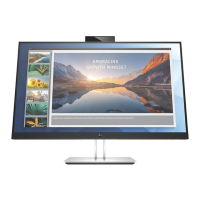
